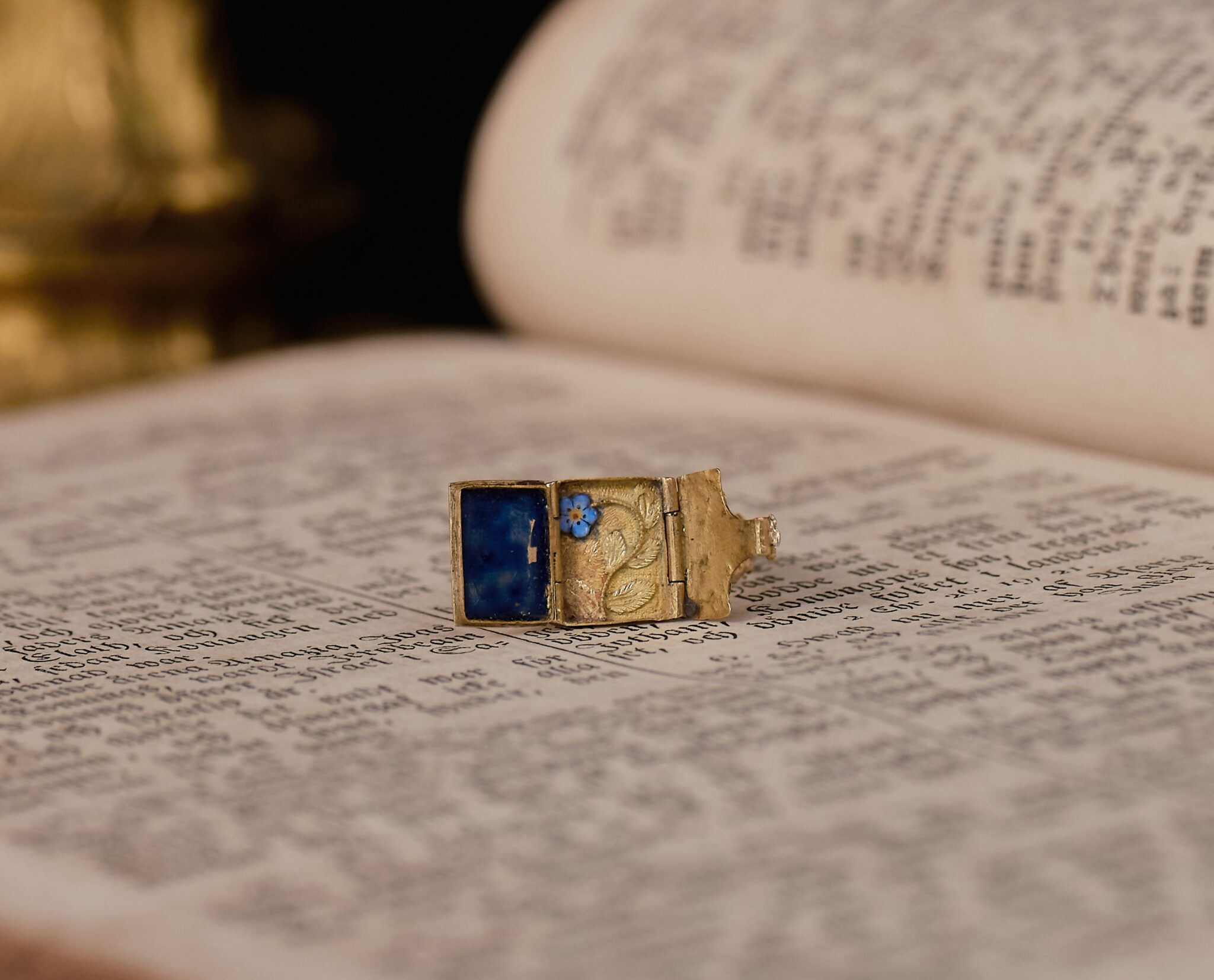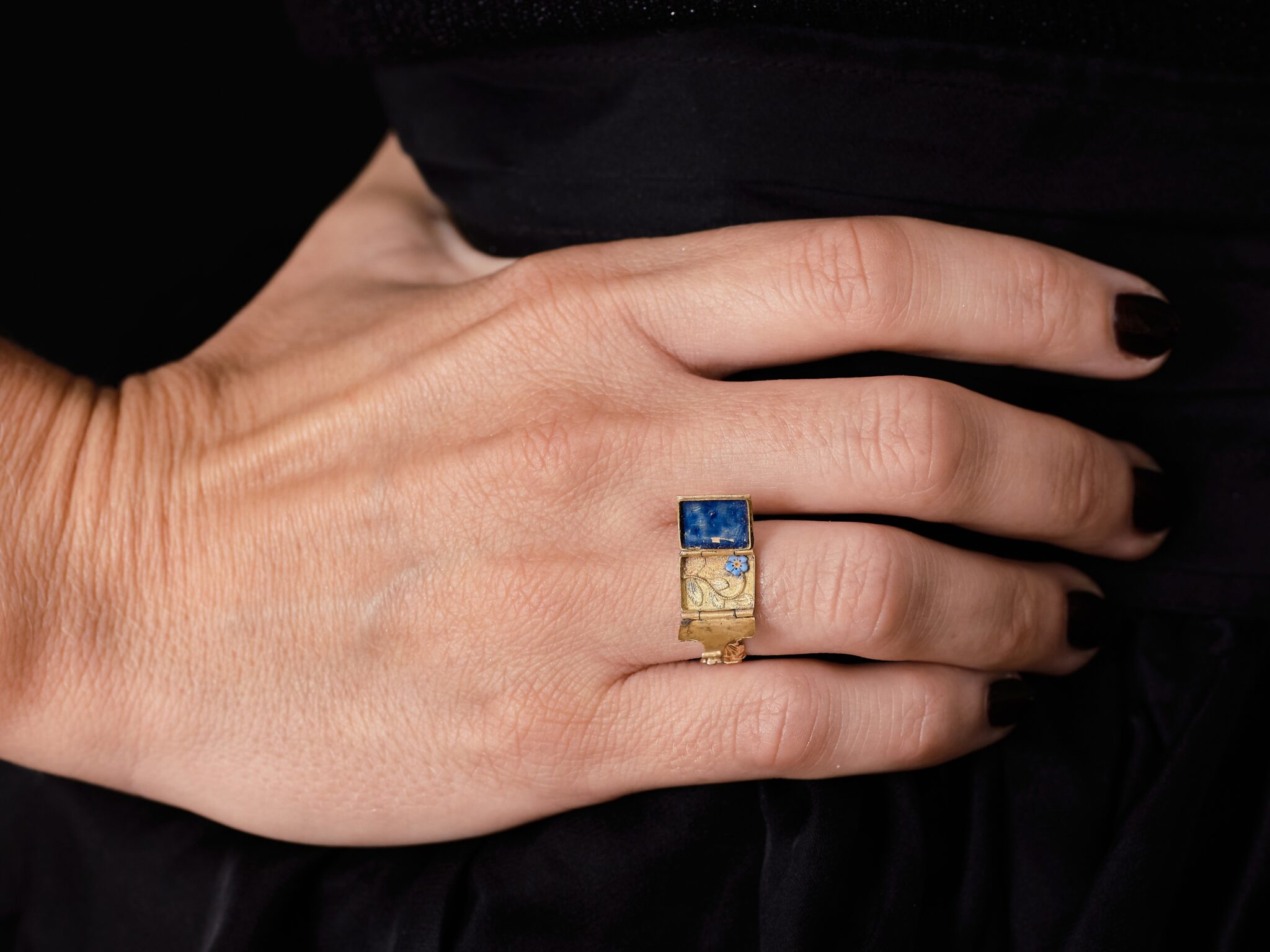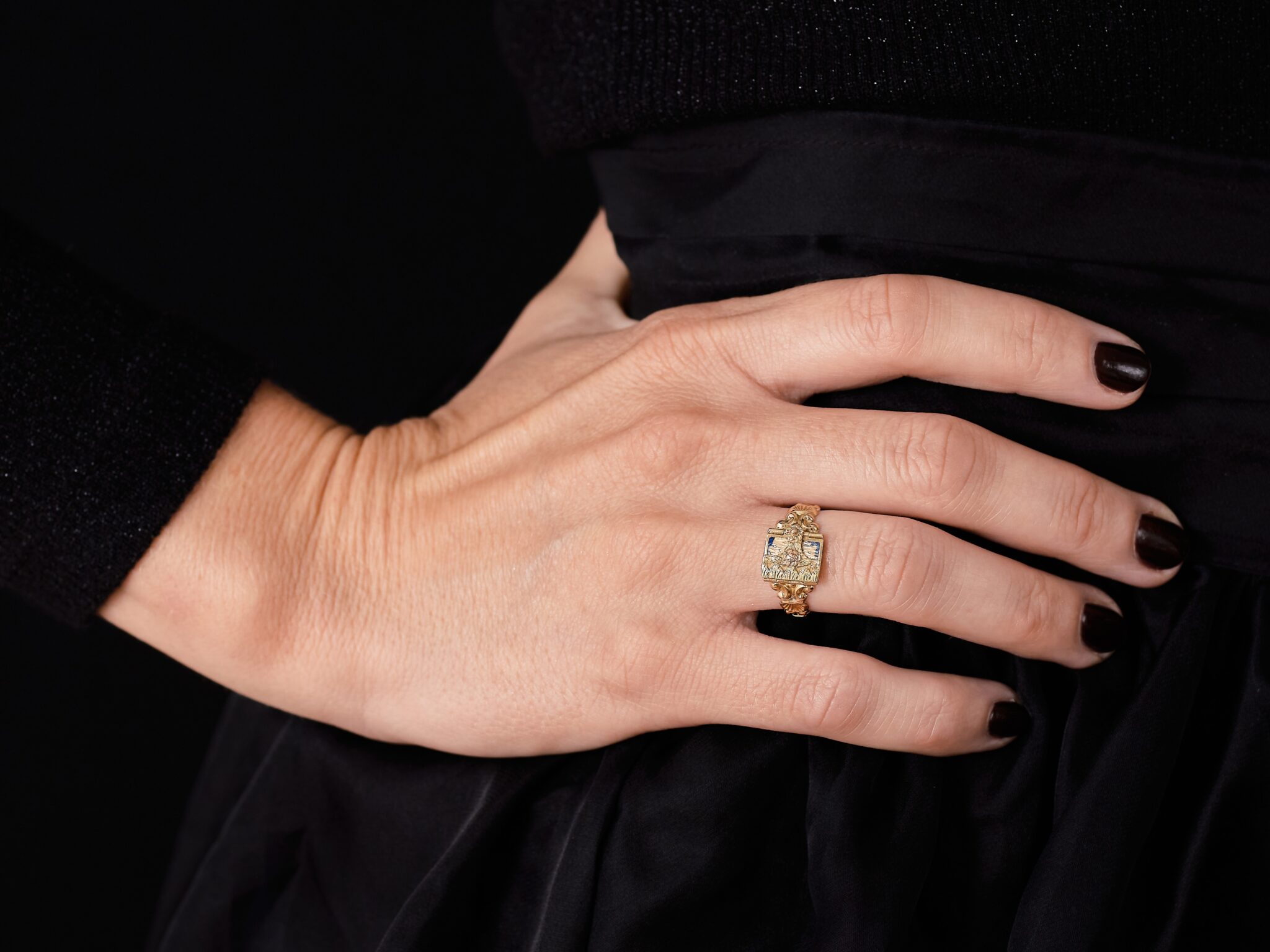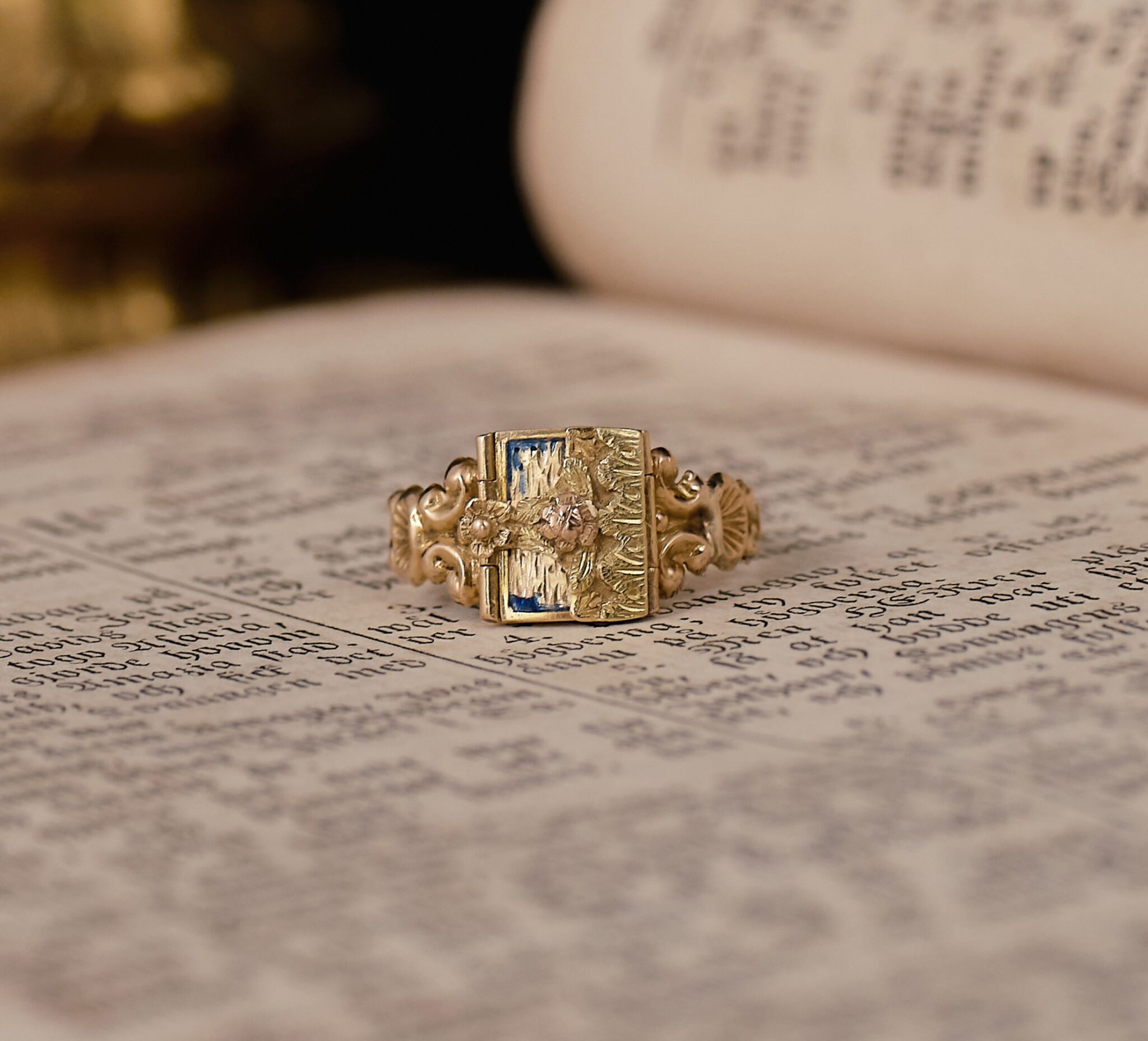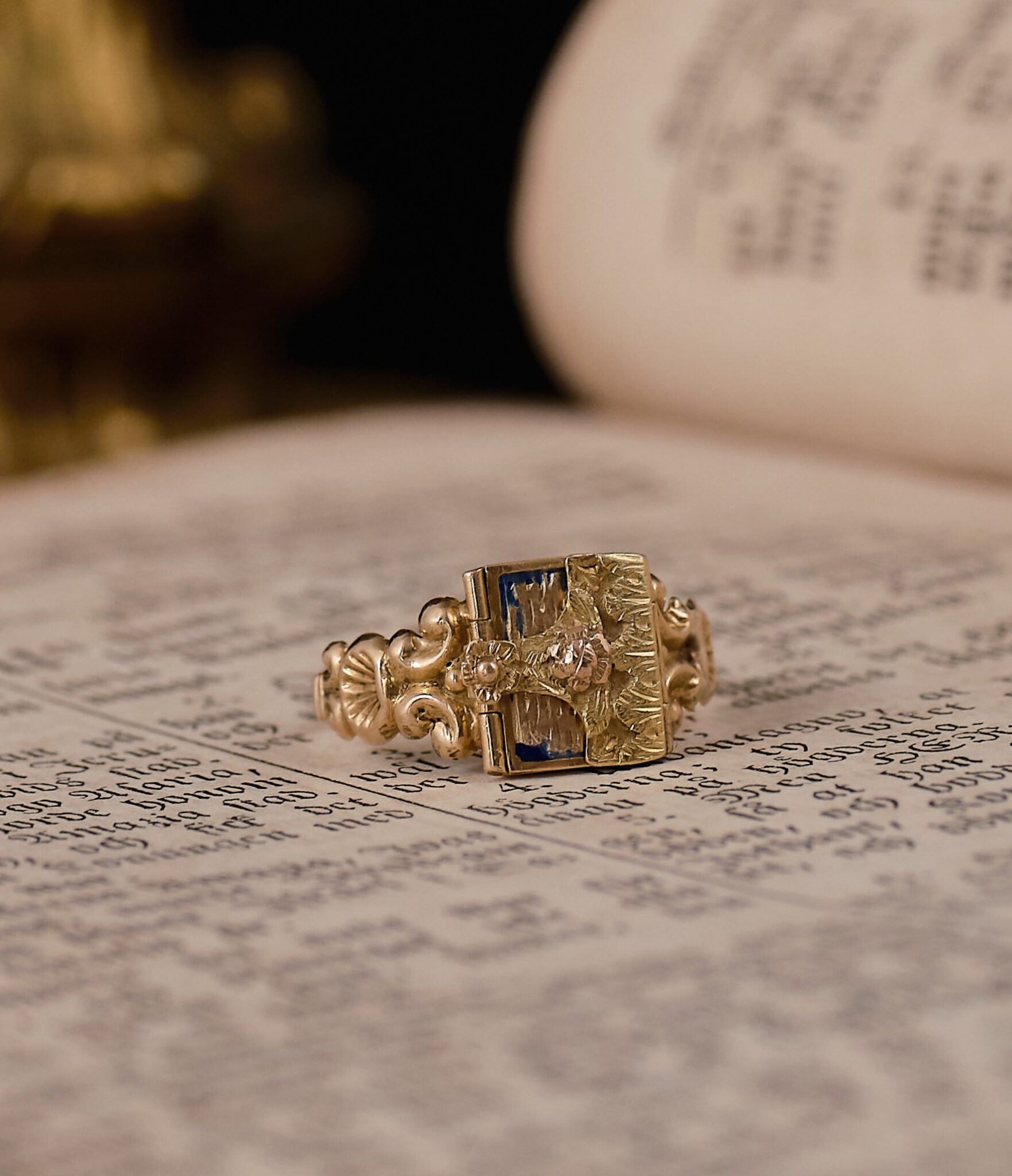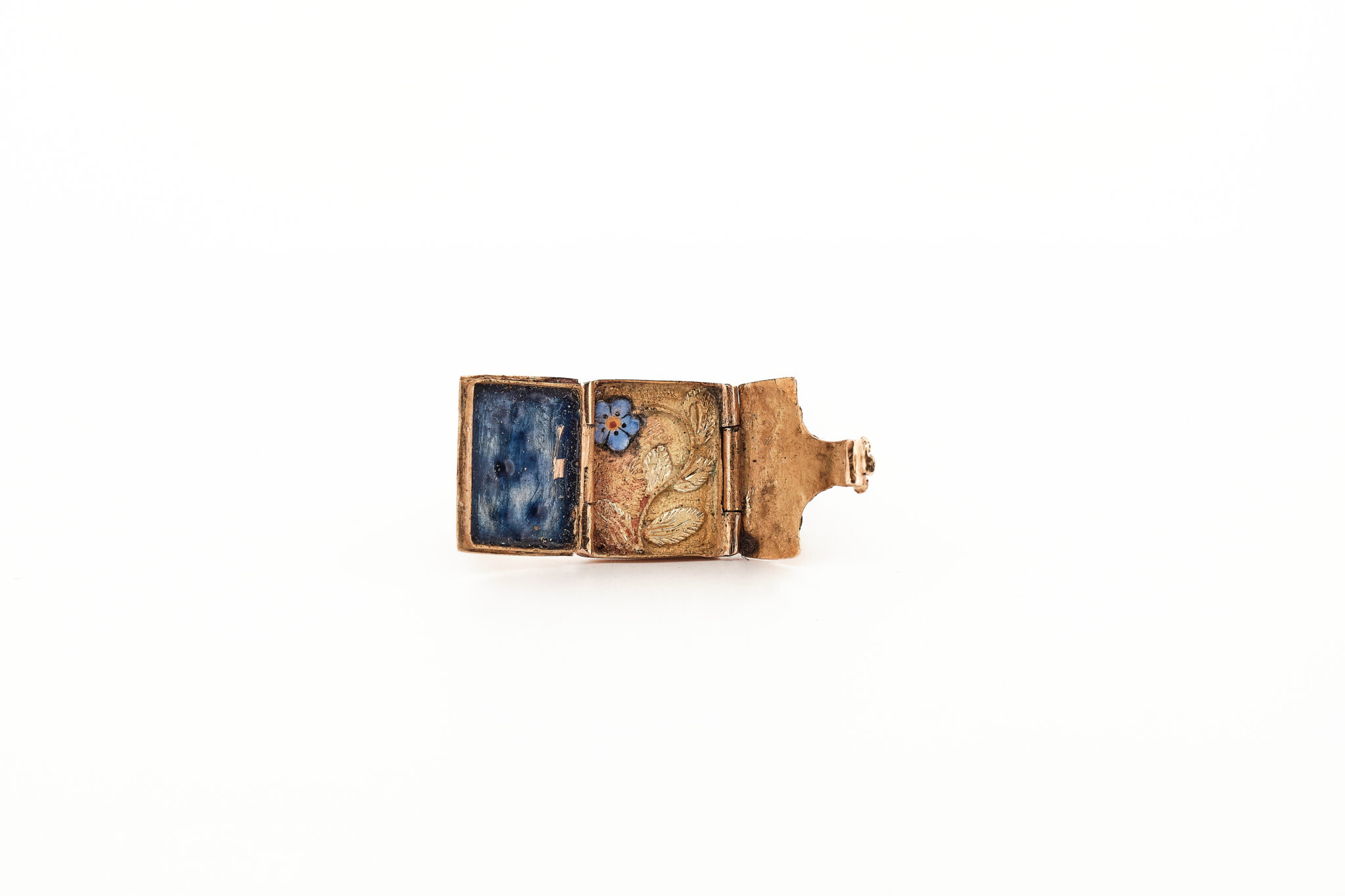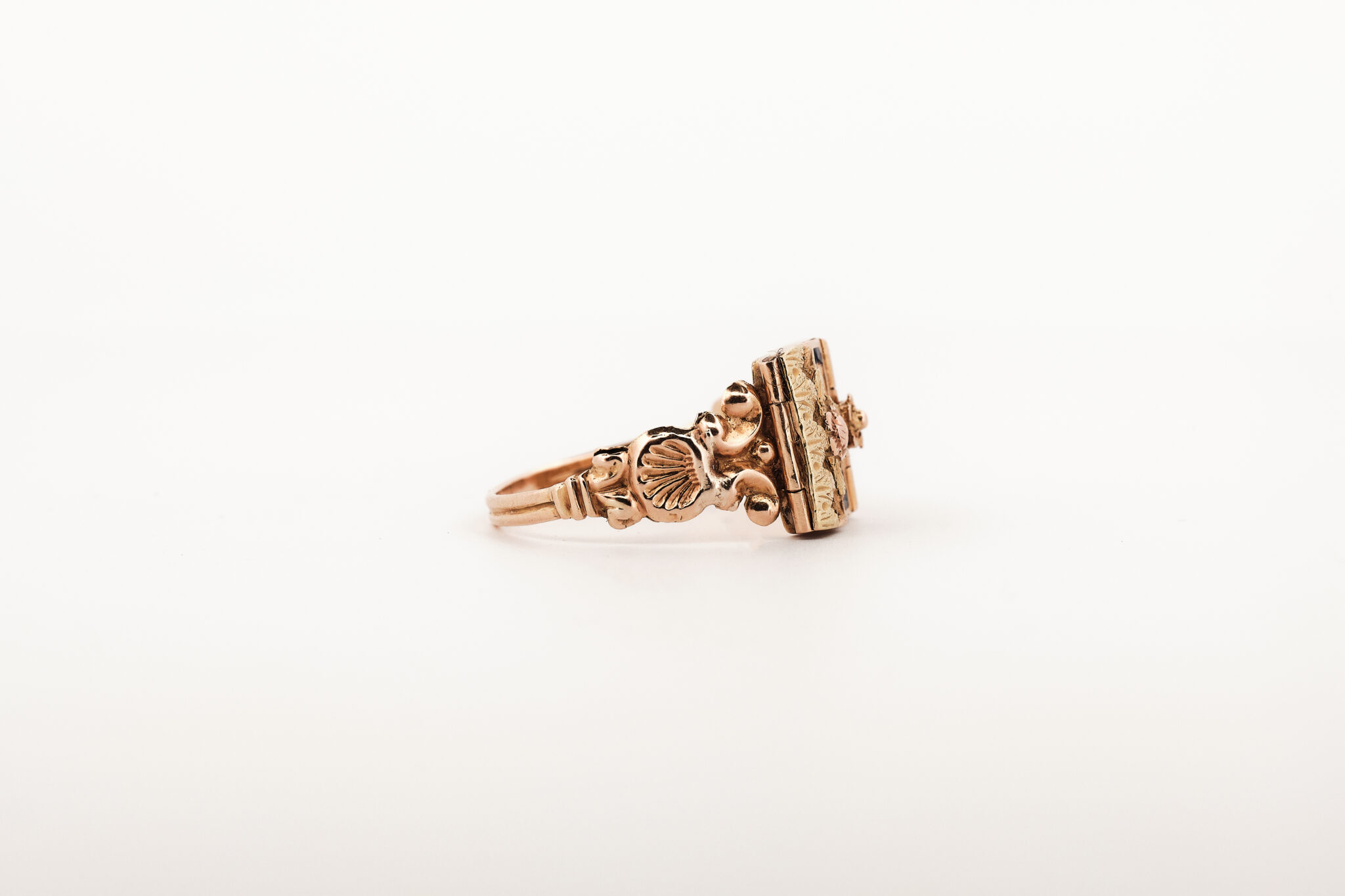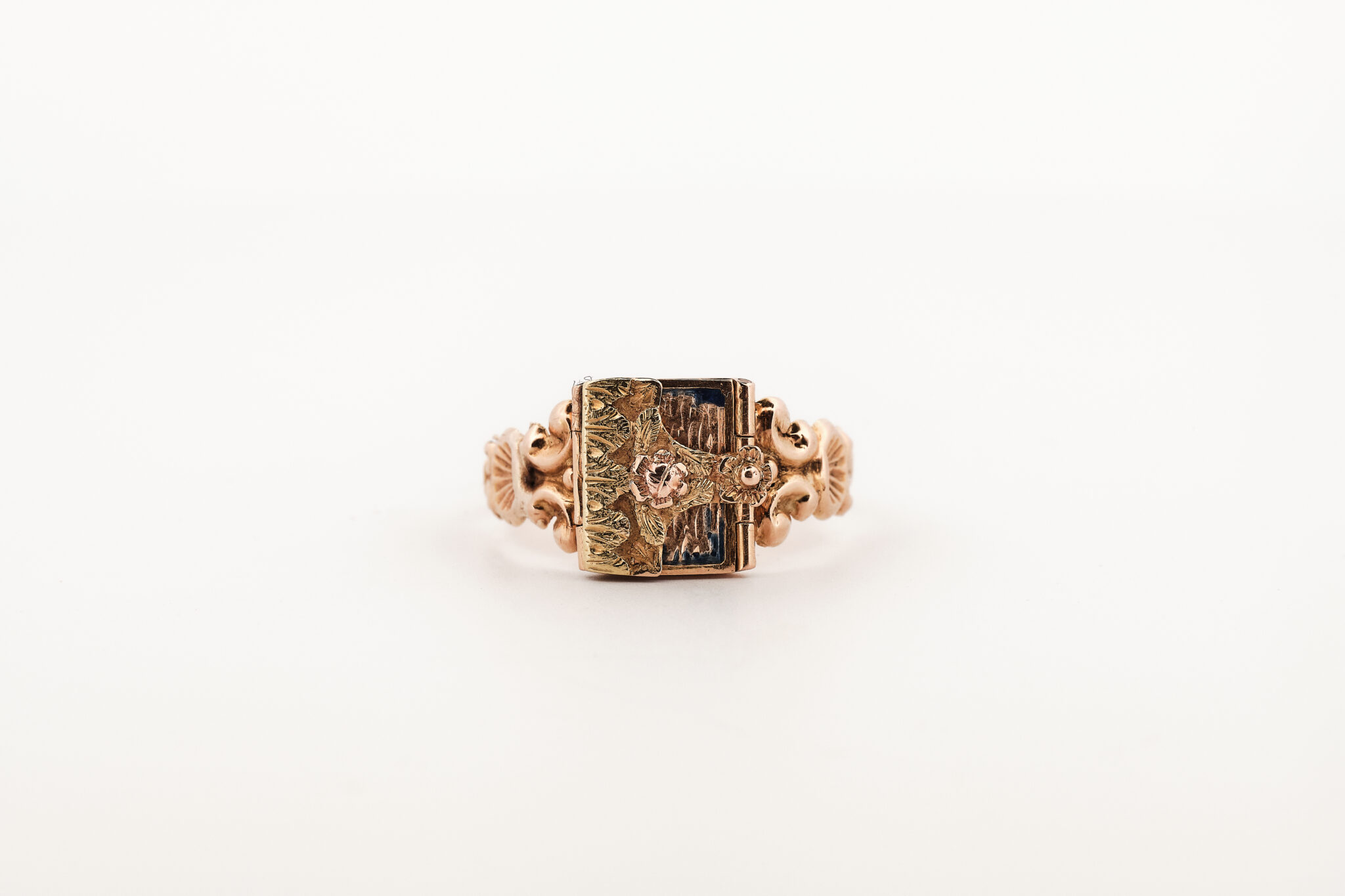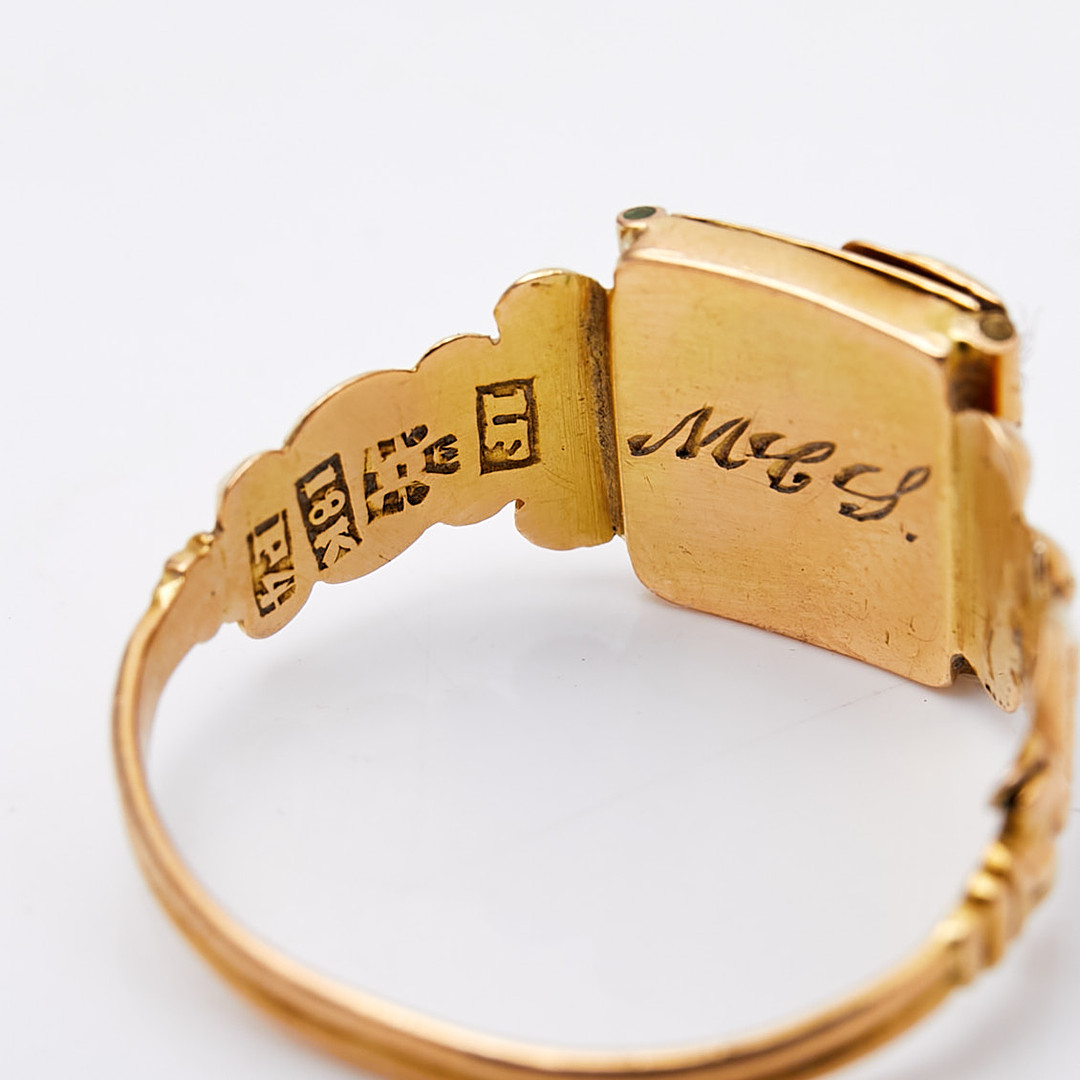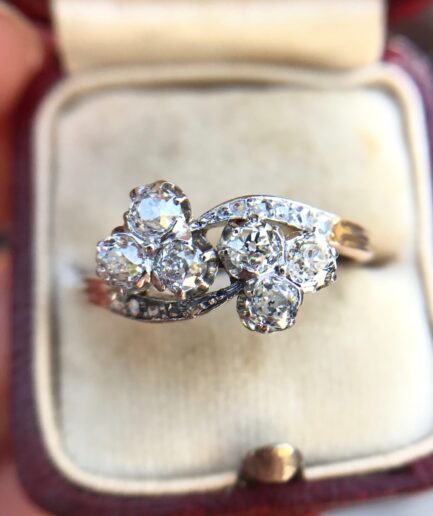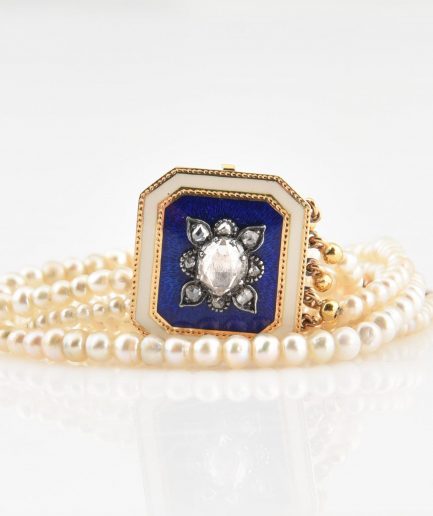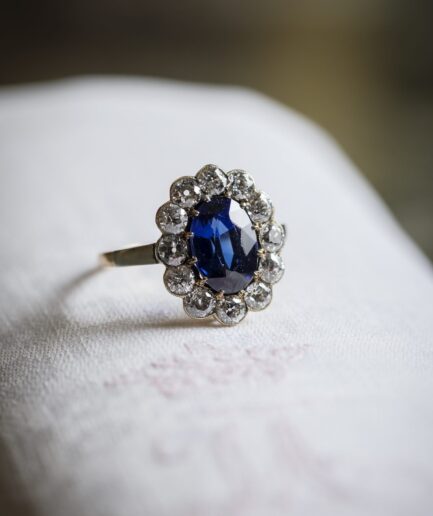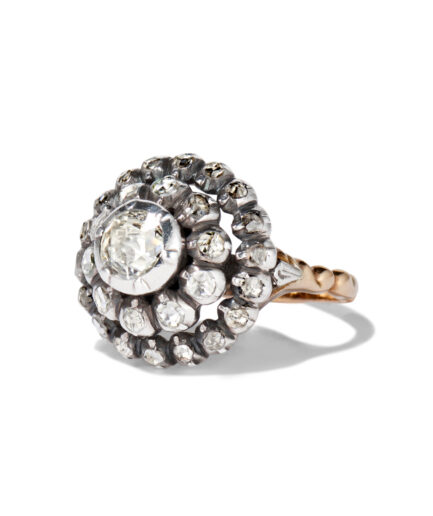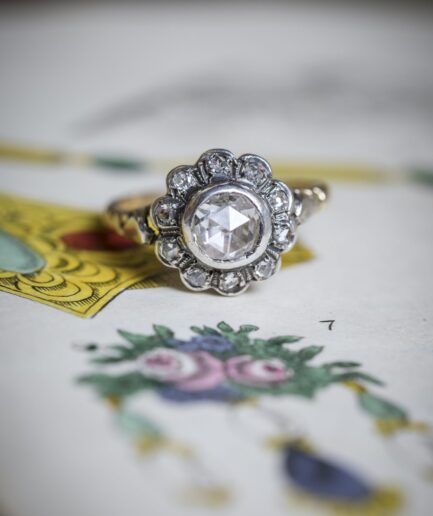19th century Rococo Revival style “forget-me-not” ring, 18k gold, engraved and enamel decoration, hidden flap in the form of a hinged envelope, inside with gold and enamel in the form of a forget-me-not flower. Made by Jonas Frohm (1836-1860). A skilled jeweler and goldsmith although little is known about him it is apparent through known works that he had a lot of experience and a high social standing producing objects and jewelry for the city’s higher classes. His son is more known as he became Helsingborg’s first city architect.
This ring is made and hallmarked Helsingborg, 1845.
Size 17/53, us 6,5 weight approx. 2.5 grams
Gift inscribed MCS
According to a medieval legend, a knight walked along a river with his lady. He bent down to fetch her a pretty little blue flower, but his heavy armor made him lose his balance and he fell into the current. Before sinking forever, he threw the flower to his lady and as he was being swept away he called out “forget me not””!
This beautiful flower may be small, but it carries with it many special meanings that people have assigned to this beautiful bloom for centuries. Flower symbolism conveys subtle messages that are engrained within our culture but still safe within in the context of religious society. As its name suggests this flower is truly unforgettable. While traditionally this flower represents remembrance, remembering those who we have lost but also remembering and cherishing special moments with loved ones, they also carry several other meanings including true love, devotion, and royalty (King Henry IV, added the little flower was added to his formal emblem in 1393.) Its first use in English literature is reportedly from c.1532 and is otherwise named Myosotis (mouse’s ear). The 19th century is when the forget-me-not truly found its place as a significant motif. For the Victorians, Forget Me Nots more commonly used as a symbol of true love and devotion, a way for people to declare their love between themselves not just as decreed before god.
It is a symbol present in most major religions and widely spread across a vast number of cultures.
The Rococo Revival style emerged in Second Empire France and then was adapted in England. Revival of the rococo style was seen all throughout Europe during the 19th century within a variety of artistic modes and expression including decorative objects of art, paintings, art prints, furniture, and interior design. Original rococo was regarded as a national style, and to many, its reemergence recalled national tradition. Rococo revival epitomized grandeur and luxury in European style and was another expression of 19th century romanticism and the growing interest and fascination with natural landscape.
Rococo is thought to derive from a combination of the French words rocaille, which characterizes a form of colorful and irregular rockwork used to embellish grottoes and fountains, and coquillage, shell motifs that accompanied the rocaille. The shank of this ring typically includes both!
Today, the forget-me-not is still as meaningful as it was 178 years ago and still a deeply romantic piece. Bearing significant meaning that goes beyond its aesthetic appeal.
The “Forget Me Nots” are the birth flower for September

